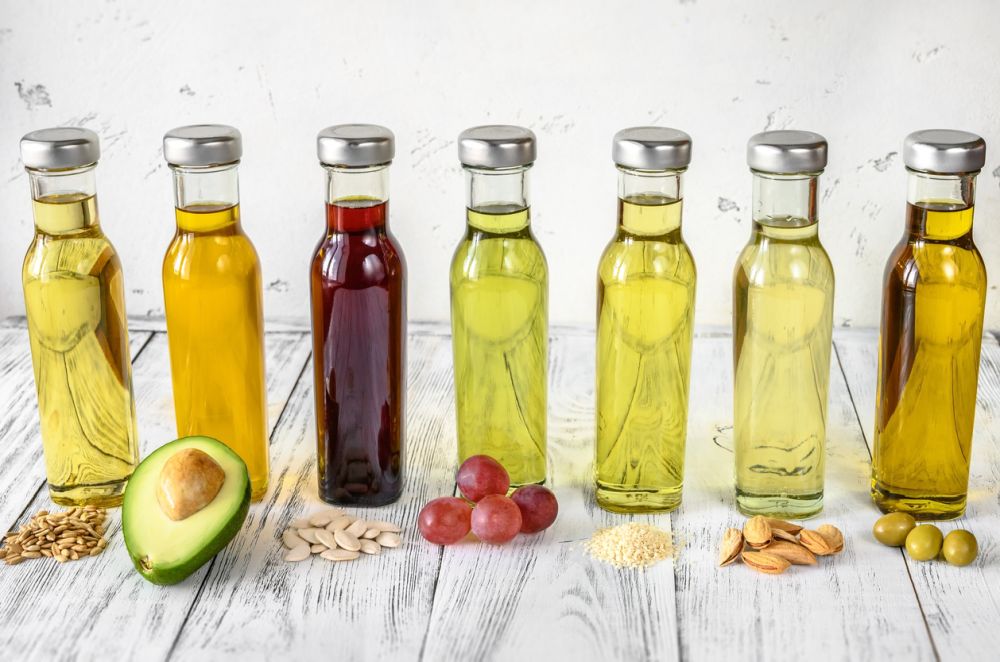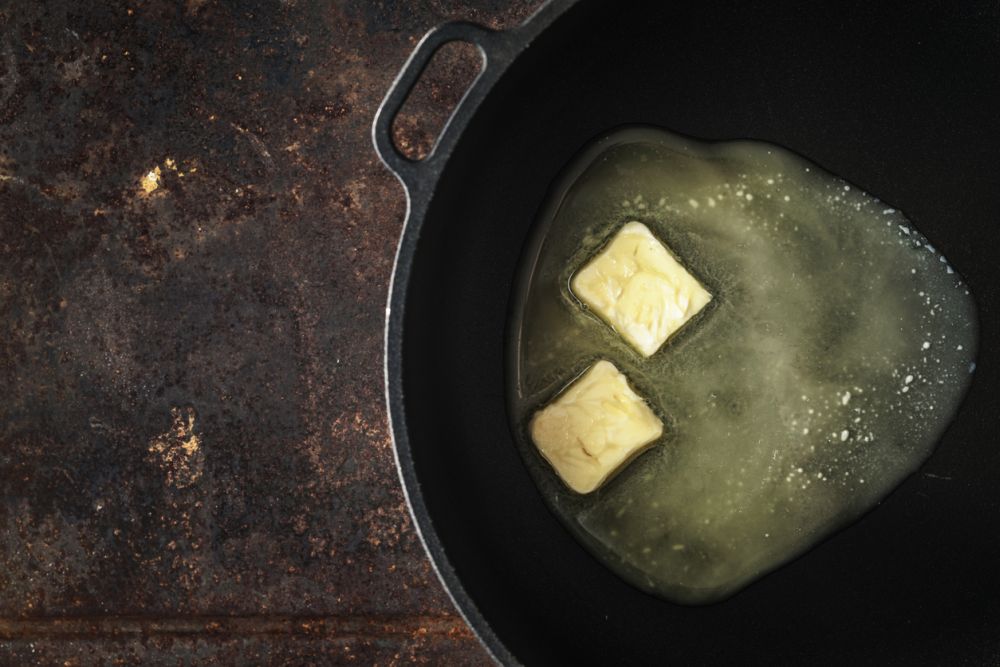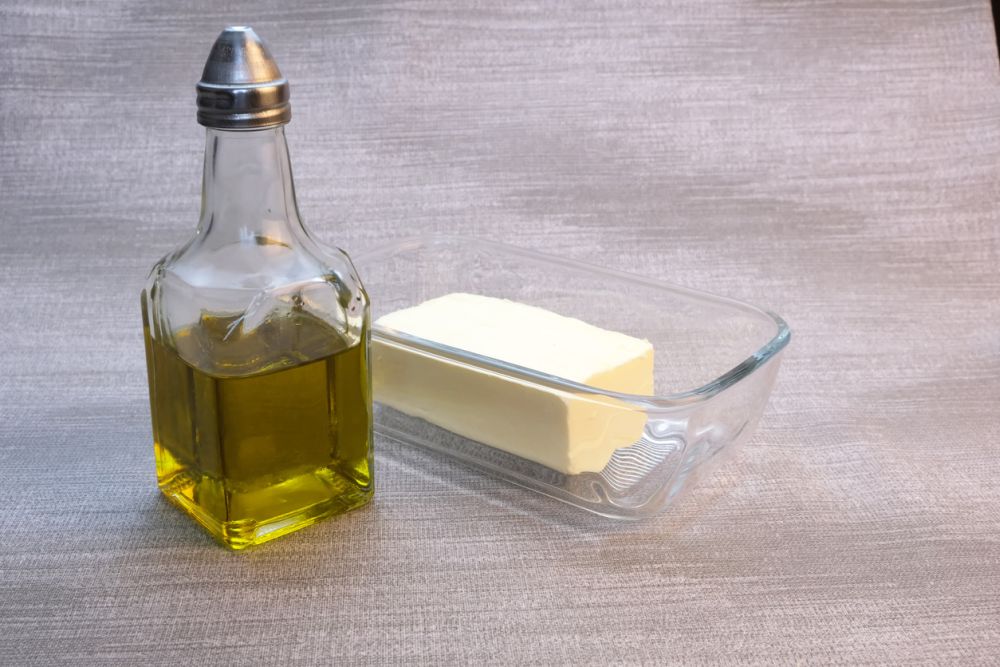Can You Substitute Butter for Oil (and Vice Versa)? How to Do it Right
Butter and oil are indispensable cooking ingredients. And it’s entirely possible to swap them when you run out of one of these ingredients. But the secret is to know how to do it. Keep reading to find out more!
Oil helps enhance the texture and flavor of a dish. On the other hand, butter changes the structure and flavor of most baked goods. But can you substitute butter for oil and oil for butter?
The short answer is yes. But you have to do it right.
This article teaches you how to substitute butter for oil correctly, and vice versa.
Table of Contents
Let’s start by learning how to replace oil with butter in your baking recipes.
How to Substitute Butter for Oil in Baking
Substituting butter for oil in baking is easy.
Here’s what you need to know when replacing oil with butter:
- Apply the 1:1 ratio. So use the butter in the same oil quantity asked by the recipe.
- Swapping oil with butter works whether it’s olive, canola, vegetable, or coconut oil.
- Butter has a unique flavor, so don’t be surprised if you can’t go back to oil.
- Melt the butter before adding it to your recipes. For example, you can melt it in the microwave and let it cool to room temperature before using it.
- Add the butter to your mixing bowl at the same time when you should add oil.
- When using butter instead of oil in a cake recipe, expect more moisture due to the butter’s water and milk content, as well as rich flavor in the crumb.
- If you’re doubling a batch of cake, reduce the liquid content by a few tablespoons to avoid having too much moisture (due to the butter’s water and milk content).
- In a chiffon cake, beat the butter into your batter and gradually fold it in beaten eggs.
- To further spice up your cake, use vanilla extracts, fresh spice, or cocoa.
- Butter is not a good substitute for oil if you’re baking for people on a non-dairy diet.
In the next section, discover how to use butter in other cooking methods that normally involve oil.
How to Use Butter in Other Oil Cooking Techniques
Besides baking, you can use butter instead of oil in other cooking techniques.
This section describes how you can use butter instead of oil when sauteing or panfrying, stir-frying, and roasting.
Let’s start with sauteing or panfrying.
Sauteing or Panfrying
When sauteing shrimp or vegetables, you can use butter instead of oil.Here’s what you need to do:
- Place the butter on a heated sauteing pan and let it bubble.
- Allow the butter to melt at low heat.
- Add the other recipe ingredients.
In the next section, find out how to use butter when stir-frying.
Stir-Frying
You can substitute butter for oil whenstir-frying. But you can’t use regular butter because it can’t stand the heat. Instead, you must useclarified butter or ghee.
In the next section, find out how to use butter when roasting.
Roasting
You can substitute butter for oil when roasting to create an exceptional flavor in your dish. Here’s what you need to do:
- Cut cold butter into large cubes.
- Dot the pan with the cubes.
- Start roasting.
Regular butter won’t work for roasting because it doesn’t withstand the high heat, so you must useclarified butter or ghee (just like we previously mentioned in the stir-frying section).
Combiningbutter and oil is possible when your cooking oil is running low or you want a butter flavor in your meals with the high heat capabilities of oil. Remember to add the butter after the oil has already started heating, in order to maintain the butter’s natural flavor.
In the next section, discover how to use oil instead of butter.
Can You Substitute Oil for Butter?
Yes, you can substitute oil for butter in certain recipes. For example, oil is a wonderful alternative to butter in cookies. But you must understand the oil’s qualities and characteristics before making the swap.
When replacing butter with oil, it’s essential to consider the oil type: highly saturated vs. highly unsaturated, or refined vs. unrefined.
This section goes through each type of cooking oil to explain how to use it.
Highly Saturated Oil vs. Highly Unsaturated Oil
Highly saturated oils have a higher percentage of saturated fat. So they solidify when exposed to low temperatures.
Palm oil and coconut oil are examples of highly saturated oils. They are ideal if your recipe requires the solidifying properties of butter.
Highly unsaturated oils are the complete opposite. They don’t solidify at lower temperatures, have low amounts of saturated fat, and can be used in all kinds of recipes.
Examples of highly unsaturated oils include vegetable, olive, canola, flaxseed, and avocado oil.
Refined Oil vs. Unrefined Oil
Oil is refined to create a neutral flavor or make it stable to heat. Regarding refined and unrefined oils, it’s worth considering the smoke point.
Expeller-pressed oils have a low smoking point, so it will burn when heated above the smoke point temperature.On the other hand, refined oils have a higher smoke point, making them ideal for use in the kitchen. But the smoke point varies from one oil type to another.
Another aspect worth considering is the oil taste. Unrefined oils naturally take the flavor of the plant they are derived from. For instance, coconut oil has a coconutty flavor, walnut oil has a nutty flavor, and olive oil has a rich grassy flavor.
Refined oils are neutral-tasting because the refining process strips the oil of its natural flavor and scent.
Substituting Oil for Butter
There are certain instances when you might consider substituting oil for butter:
- In most cake recipes, butter is an essential ingredient that adds structure to the cake. For instance, whipping sugar and cream butter create air pockets that work well with baking powder to create a fluffy but steady structured cake.
- If you used oil in such a cake, it would be dense instead of fluffy. So, if you’re unsure, it’s always best to use a 50/50 combination of oil and butter instead of replacing all the butter. As such, your cake will have that added moisture with the same steady structure provided by butter.
- When you are substituting oil for butter, it all comes down to the type of oil you use.
- Substitute only about ¾ of the butter the recipe calls for with vegetable, canola, or olive oil. So, if you have to use 1 cup of butter, replace that with ¾ cup of oil. If you are using coconut oil, apply the 1:1 ratio.
In the next section, you can learn more about substituting oil for butter.
Substitute Oil for Butter (FAQ)
This section gives you additional insight into butter oil substitution:
How do you substitute butter for oil in baking?
When replacing butter with oil in baking, use 3/4 cup of oil for every cup of butter.
Can we cook with butter instead of oil?
Yes, it’s possible to cook with butter instead of oil, and vice versa.
Is cake better with oil or butter?
Vegetable oil is better for cake than butter since it will be moist.
The next and final section summarizes the entire article on butter oil substitution.
Substitute Oil for Butter (Conclusion)
Butter works for many recipes because it has a delicious flavor that’s almost hard to replace.But sometimes, you may not have butter on hand or can’t have butter for health reasons. In such a case, you need to find a suitable replacement.
Oil, whether vegetable, olive, or coconut, works as a decent butter substitute but consider the taste.On the other hand, if your recipe requires oil and you’ve run out of oil, you can replace it with butter. Just remember to first melt and cool the butter before using it.
Do you regularly substitute oil for butter or vice versa? What’s your secret? Let us know in the comments below!




